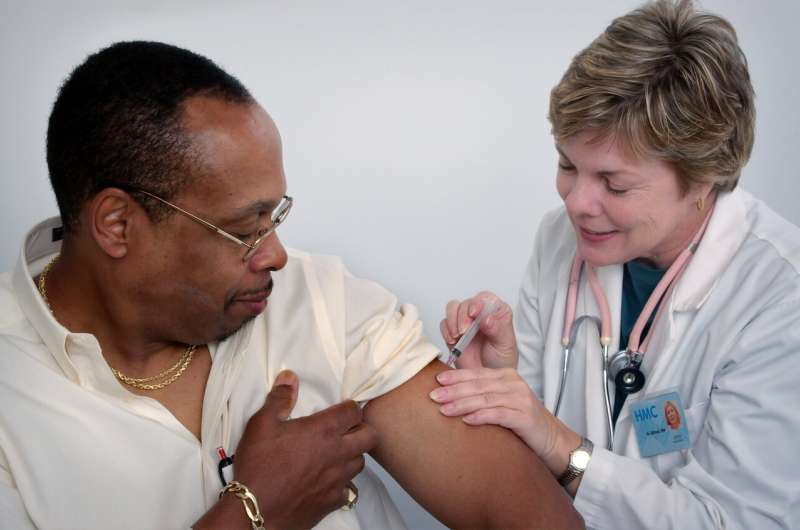
I nervously fell into a long line of fellow first graders in the gymnasium of St. Louis’ Hamilton Elementary School in the spring of 1955. We were waiting for our first injection of the new polio vaccine.
The National Foundation for Infantile Paralysis—with money raised through its annual March of Dimes campaign—had sponsored field tests for a vaccine developed by Jonas Salk. The not-for-profit had acquired sufficient doses to inoculate all the nation’s first and second graders through simultaneous rollouts administered at their elementary schools. The goal was to give 30 million shots over three months.
Now, more than six decades later, attention focuses on the rollout of two COVID-19 vaccines, following their emergency use authorization by the U.S. Food and Drug Administration. States have begun to administer them in a rocky and frustratingly slow delivery process – while hundreds of thousands of new cases continue to be diagnosed daily in the U.S.
While not necessarily comforting, it is useful to recognize that the early days and weeks of mass distribution of a new medication, particularly one that is intended to address a fearful epidemic, are bound to be frustrating. Only after examining the complex polio vaccine distribution process as documented in papers collected in the Dwight D. Eisenhower Presidential Library did I come to understand how partial my childhood memories actually were.
Vaccine distribution, 65 years ago
After I received my polio shot, I remember my parents’ relief.
The polio virus causes flu-like symptoms in most people who catch it. But in a minority of those infected, the brain and spinal cord are affected; polio can cause paralysis and even death. With the distribution of Salk’s vaccine, the much-feared stalker of children and young adults had seemingly been tamed. Within days, however, the initial mass inoculation program went off the rails.
Immediately following the government’s licensing of the Salk vaccine, the National Foundation for Infantile Paralysis contracted with private drug companies for US$9 million worth of vaccine (around $87 million today) – about 90% of the stock. They planned to provide it free to the country’s first and second graders. But just two weeks after the first doses were administered, the Public Health Service reported that six inoculated children had come down with polio.
As the number of such incidents grew, it became clear that some of the shots were causing the disease they were meant to prevent. A single lab had inadvertently released adulterated doses.
After considerable fumbling and outright denial, Surgeon General Leonard Steele first pulled all tainted vaccine off the market. Then, less than a month after the initial inoculations, the U.S. shut down distribution entirely. It wasn’t until the introduction of a new polio vaccine in 1960, created by Albert Sabin, that public trust returned.
History’s lessons for 2021
This story offers several lessons relevant to the COVID-19 vaccine distribution just now getting rolling.
First, federal coordination of an emergent lifesaving medical product is critical.
The federal government had declined to play an active oversight and coordination role for the polio vaccine, but still wanted the credit. The federal Department of Health, Education and Welfare (now Health and Human Services) offered no plan for distribution beyond the privately funded school-based program.
The department waited a full month after the vaccine was first administered before bringing together a permanent scientific clearance panel. That delay had less to do with formal procedures than with the ideological opposition of Health, Education and Welfare Secretary Oveta Culp Hobby.
Hobby was a political appointee who had taken office just months before the vaccine was approved. Her reluctance to involve the federal government in matters that she believed were best left in private hands—and her oft-stated fear of “socialized medicine”—meant that safety checks would be left to the private labs producing the vaccine. The results immediately caused dire problems and even avoidable deaths.
Second, the polio vaccine distribution process demonstrated how vital it is for the federal government to act in ways deserving of public trust.
In those hopeful first few weeks of the polio vaccine distribution, those of us lining up for shots had little to fear beyond the sting of an injection. That changed quickly.
Once some children had in fact been harmed by the shot, obfuscation by government officials, clumsy explanations and delayed responses engulfed the entire production and distribution process in confusion and suspicion. Trust in the government and the vaccine eroded accordingly. Gallup polls found that by June 1955, almost half of the parents who responded said they would not take any further vaccine shots – and the full regimen of polio inoculation required three doses. In 1958, some drug companies halted production, citing “public apathy.” It wasn’t surprising to see a startling upsurge in polio in 1959, doubling cases from the previous year.
Today, with COVID-19 already highly politicized—polls suggest that a minority of Americans will decline to take any vaccine – it is critical to administer an effective vaccine delivery program in a manner that builds trust rather than undermines it.
Scattered reports of allergic reactions to the COVID-19 vaccine have generated not the denials of the Eisenhower administration but rather honest and realistic responses from the Centers for Disease Control and Prevention. Particularly for vaccines that require multiple inoculations—both Pfizer and Moderna vaccines require two shots administered with a 21- or 28-day gap – mass inoculations will require not just an initial willingness to get the first dose but the maintenance of trust sufficient to get people back for the followup.
Source: Read Full Article


